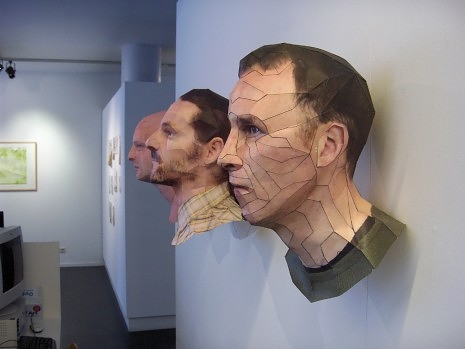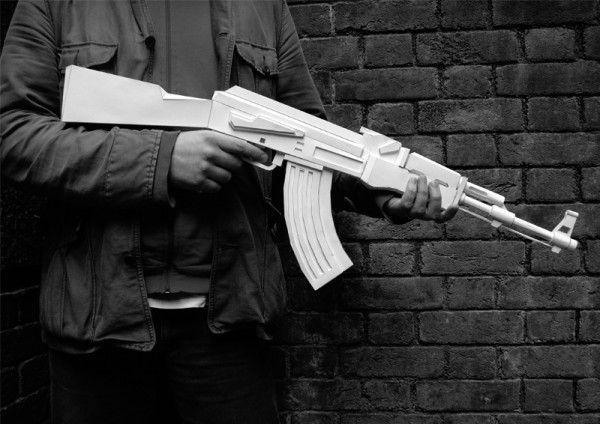Looking Outwards – Papercraft
I’ve always enjoyed computational papercraft projects for the dichotomy they create. Paper folding is one of most traditional art techniques and 3D modeling one of the most cutting-edge, but they must both be present in a good papercraft project. The combination makes for some charming projects that make us wonder what things in our virtual world might look like IRL.
Above I linked to a great papercraft profile by Bert Simons, an artist who has been converting 3D models of people’s heads into real-life paper models. The results are convincingly realistic and can even be worn as a mask!
Simons did his paper work in a piece of software called Pepakura Designer which converts 3D models from various popular programs into paper cutouts (or laser-cut-outs) that can be glued together to create photorealistic models. There is a gallery of Pepakura-generated projects on the software’s website.
Others have had success creating paper models using the open source modeling software Blender.
Another (perhaps more politically charged) papercraft project is this paper AK-47 created by designer Martin Postler. I can’t find many details about how the model was constructed, so I don’t know if it was computer-generated or created by hand. One thing that this craft’s designer pointed out that hadn’t occurred to me is how paper-based models can take advantage of paper’s inherent malleability. People can customize their weapon by drawing on it, adding stickers, rearranging the pieces, or even burning it.
Update: I just found the company website for the designers who made this AK-47. It looks like it is computer-based. Check out their website for some other cool computer art projects.
As 3D printing becomes ever cheaper, many expect that someday a 3D printer will be as common and accessible as an office laser printer is today. Until then, however, it would be interesting if we could use our already-existing paper printing abilities to make interesting projects like these. There’s something special about seeing the virtual world become reality through 3D sculpture, and these paper products look like a great low-cost way to break that barrier.

